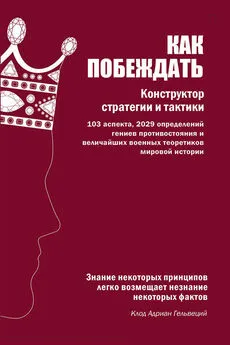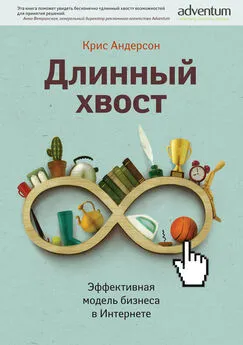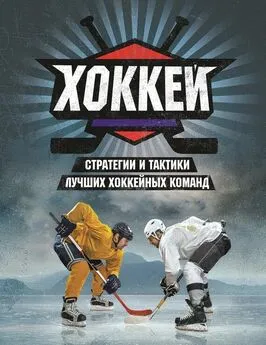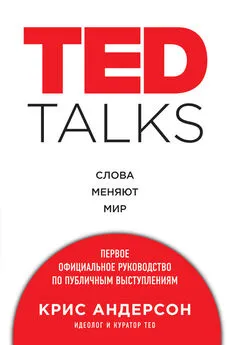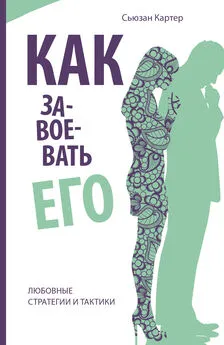Крис Андерсон - Игра с числами. Виртуозные стратегии и тактики на футбольном поле
- Название:Игра с числами. Виртуозные стратегии и тактики на футбольном поле
- Автор:
- Жанр:
- Издательство:Эксмо
- Год:2016
- Город:Москва
- ISBN:978-5-699-84998-7
- Рейтинг:
- Избранное:Добавить в избранное
-
Отзывы:
-
Ваша оценка:
Крис Андерсон - Игра с числами. Виртуозные стратегии и тактики на футбольном поле краткое содержание
В отличие от многих других произведений, она не навязывает свое мнение. Лишь предлагает задуматься и посмотреть на ситуацию с нескольких сторон.
Расскажет вам о новых и необычных тактиках, которые используют команды, но которые не видны обычным зрителям. Покажет схемы, которые не афишируются, и приемы, скрытые от глаз обывателя.
Издание окунет в водоворот страстей, стереотипов и разрушающей правды.
Вы до сих пор уверены, что знаете хоть что-то про футбол?
Игра с числами. Виртуозные стратегии и тактики на футбольном поле - читать онлайн бесплатно ознакомительный отрывок
Интервал:
Закладка:
Ayton, Peter and Anna Braennberg (2008). Footballers’ Fallacies. In Patric Andersson, Peter Ayton and Carsten Schmidt (eds.). Myths and Facts About Football: The Economics and Psychology of the World’s Greatest Sport . Newcastle upon Tyne: Cambridge Scholars Publishing.
Becker, A. J. and C. A. Wrisberg (2008). Effective Coaching in Action: Observations of Legendary Collegiate Basketball Coach Pat Summitt. The Sport Psychologist 22 (2). С. 197–211.
Ben-Naim, Eli, Federico Vazquez and Sidney Redner (2006). Parity and Predictability of Competitions. Journal of Quantitative Analysis in Sports 2 (4); physics.bu.edu/~redner/pubs/pdf/jqas.pdf.
Bennedsen, Morten, Francisco Pérez-González and Daniel Wolfenzon (2010). Do CEO s Matter? Working Paper, INSEAD.
Berg, Peter, Eileen Appelbaum, Thomas Bailey and Arne L. Kalleberg (1996). The Performance Effects of Modular Production in the Apparel Industry. Industrial Relations 35 (3). С. 356–373.
Binsch, Olaf, Raôul R. D. Oudejans, Frank C. Bakker and Geert J. P. Savelsbergh (2010). Ironic Effects and Final Target Fixation in a Penalty Shooting Task. Human Movement Science 29 (2). С. 277–288.
Bortkiewicz, Ladislaus von (1898). Das Gesetz der kleinen Zahlen . Leipzig: E. G. Teubner.
Bridgewater, Sue (2010). Football Management . London: Palgrave Macmillan.
Bridgewater, Sue, Lawrence M. Kahn and Amanda H. Goodall (2009). Substitution Between Managers and Subordinates: Evidence from British Football. NCER Working Paper Series 51, National Centre for Econometric Research.
Brillinger, David R. (2010). Soccer/World Football. In James J. Cochran (ed.). Encyclopedia of Operations Research and Management Science. New York: Wiley.
Brocas, Isabelle and Juan D. Carrillo (2004). Do the «Three-Point Victory» and «Golden Goal» Rules Make Soccer More Exciting? A Theoretical Analysis of a Simple Game. Journal of Sports Economics 5 (2). С. 169–185.
Carling, Chris (2010). Analysis of Physical Activity Profiles When Running with the Ball in a Professional Soccer Team. Journal of Sports Sciences 38 (3). С. 319–326.
Carling, Christopher and Jonathan Bloomfield (2010). The Effect of an Early Dismissal on Player Work-rate in a Professional Soccer Match. Journal of Science and Medicine in Sport 13 (1). С. 126–128.
Carling, Christopher, Vincent Espié, Franck Le Gall, Jonathan Bloomfield and Hugues Jullien (2010). Work-rate of Substitutes in Elite Soccer: A Preliminary Study. Journal of Science and Medicine in Sport 13 (2). С. 253–255.
Cullis, Stan (1961). All for the Wolves. London: Sportsman Book Club.
Dawson, Peter, Stephen Dobson and Bill Gerrard (2000). Estimating Coaching Efficiency in Professional Team Sports: Evidence from English Association Football. Scottish Journal of Political Economy 47 (4). С. 399–421.
De Paola, Maria and Vincenzo Scoppa (2009). The Effects of Managerial Turnover: Evidence from Coach Dismissals in Italian Soccer Teams. Working Paper, Department of Economics and Statistics, University of Calabria, Cosenza, Italy.
Del Corral, Julio, Carlos Pestana Barros and Juan Prieto-Rodriguez (2008). The Determinants of Soccer Player Substitutions: A Survival Analysis of the Spanish Soccer League. Journal of Sports Economics 9 (2). С. 160–172.
Del Corral, Julio, Juan Prieto-Rodriguez and Rob Simmons (2010). The Effect of Incentives on Sabotage: The Case of Spanish Football. Journal of Sports Economics 11 (3). С. 243–260.
Di Salvo, V., R. Baron, H. Tschan, F. J. Calderon Montero, N. Bachl and F. Pigozzi (2007). Performance Characteristics According to Playing Position in Elite Soccer. International Journal of Sports Medicine 28 (3). С. 222–227.
Dilger, Alexander and Hannah Geyer (2009). Are Three Points for a Win Really Better Than Two? A Comparison of German Soccer League and Cup Games. Journal of Sports Economics 10 (3). С. 305–318.
Dobson, Stephen and John Goddard (2011). The Economics of Football. Cambridge: Cambridge University Press.
Dunning, David and Mary Parpal (1989). Mental Addition Versus Mental Subtraction in Counterfactual Reasoning: On Assessing the Impact of Personal Actions and Life Events. Journal of Personality and Social Psychology 57 (1). С. 5–15.
Ericsson, K. Anders, Michael J. Prietula and Edward T. Cokely (2007). The Making of an Expert. Harvard Business Review , July – August. С. 115–121.
Franck, Egon and Stephan Nüesch (2010). The Effect of Talent Disparity on Team Productivity in Soccer. Journal of Economic Psychology 31 (2). С. 218–229.
Galeano, Eduardo (2003). Soccer in Sun and Shadow. New York: Verso.
Gallimore, Ronald and Roland Tharp (2004). What a Coach Can Teach a Teacher, 1975–2004: Reflections and Reanalysis of John Wooden’s Teaching Practices. The Sport Psychologist 18 (2). С. 119–137.
Gallo, Edoardo, Thomas Grund and J. James Reade (2013). Punishing the Foreigner: Implicit Discrimination in the Premier League Based on Oppositional Identity. Oxford Bulletin of Economics and Statistics 75 (1). С. 136–156.
Garicano, Luis and Ignacio Palacios-Huerta (2005). Sabotage in Tournaments: Making the Beautiful Game a Bit Less Beautiful. CEPR Discussion Paper 5231.
Gerrard, Steven (2006). Gerrard: My Autobiography. London: Transworld.
Gilovich, Thomas, Robert Vallone and Amos Tversky (1985). The Hot Hand in Basketball: On the Misperception of Random Sequences. Cognitive Psychology 17 (3). С. 295–314.
Gladwell, Malcolm (2008). Outliers: The Story of Success . New York: Little, Brown.
Goldblatt, David (2008). The Ball Is Round . New York: Riverhead Books.
Groysberg, Boris (2010). Chasing Stars: The Myth of Talent and the Portability of Performance . Princeton: Princeton University Press.
Grund, Thomas U. (2012). Network Structure and Team Performance: The Case of English Premier League Soccer Teams. Social Networks, September.
Hamilton, Barton H., Jack A. Nickerson and Hideo Owan (2003). Team Incentives and Worker Heterogeneity: An Empirical Analysis of the Impact of Teams on Productivity and Participation. Journal of Political Economy 111 (3). С. 465–497.
Hastorf, Albert H. and Hadley Cantrell. They Saw a Game: A Case Study. Journal of Abnormal and Social Psychology 49 (1). С. 129–134.
Hearst, Eliot (1991). Psychology and Nothing. American Scientist 79 (5). С. 432–443.
Henle, Mary (1978). One Man Against the Nazis – Wolfgang Köhler. American Psychologist 33 (1). С. 939–944.
Hesse-Lichtenberger, Uli (2003). Tor! The Story of German Football . London: WSC Books.
Heuer, Andreas, Christian Müller and Oliver Rubner (2010). Soccer: Is Scoring Goals a Predictable Poissonian Process? Europhysics Letters 89, 38007; http://arxiv.org/pdf/1002.0797.
Heuer, Andreas, Christian Müller, Oliver Rubner, Norbert Hagemann and Bernd Strauss (2011). Usefulness of Dismissing and Changing the Coach in Professional Soccer. PLoS ONE 6 (3); www.plosone.org.
Honigstein, Raphael (2008). Englischer Fussball: A German’s View of our Beautiful Game. London: Yellow Jersey.
Hopcraft, Arthur (1968). The Football Man: People and Passions in Soccer. London: Collins.
Hüffmeier, Joachim and Guido Hertel (2011). When the Whole Is More Than the Sum of Its Parts: Group Motivation Gains in the Wild. Journal of Experimental Social Psychology 47 (2). С. 455–459.
Hughes, Charles (1990). The Winning Formula . London: Collins.
Hughes, Mike (2003). Notational Analysis. In Thomas Reilly and A. Mark Williams (eds.). Science and Soccer , 2nd edn. London: Routledge, pp. 245–264.
Hughes, Mike D. and Roger Bartlett (2002). The Use of Performance Indicators in Performance Analysis. Journal of Sports Sciences 20 (10). С. 739–754.
Hughes, Mike D. and Steven Churchill (2004). Attacking Profiles of Successful and Unsuccessful Teams in Copa America 2001. Journal of Sports Sciences 22 (6). С. 505.
Hughes, Mike and Ian Franks (2005). Analysis of Passing Sequences, Shots and Goals in Soccer. Journal of Sports Sciences 23 (5). С. 509–514.
Hughes, M. D., K. Robertson and A. Nicholson (1988). An Analysis of 1986 World Cup of Association Football. In T. Reilly, A. Lees, K. Davids and W. Murphy (eds.). Science and Football . London: E&FN Spon, pp. 363–367.
Jones, P. D., N. James and S. D. Mellalieu (2004). Possession as a Performance Indicator in Soccer. International Journal of Performance Analysis in Sport 4 (1). С. 98–102.
Kato, Takao and Pian Shu (2009). Peer Effects, Social Networks and Intergroup Competition in the Workplace. ASB Economics Working Paper, University of Aarhus.
Kelley, Harold H. (1972). Attribution in Social Interaction. In E. E. Jones, D. E. Kanouse, H. H. Kelley, R. E. Nisbett, S. Valins and B. Weiner (eds.). Attribution: Perceiving the Causes of Behavior. Morristown, NJ: General Learning Press.
Kelly, Seamus and Ivan Waddington (2006). Abuse, Intimidation and Violence as Aspects of Managerial Control in Professional Soccer in Britain and Ireland. International Review for the Sociology of Sport 41 (2). С. 147–164.
Keri, Jonah (2011). The Extra 2 %: How Wall Street Strategies Took a Major League Baseball Team from Worst to First . New York: Random House.
Kerr, Norbert L. and Guido Hertel (2011). The Köhler Group Motivation Gain: How to Motivate the “Weak Links” in a Group. Social and Personality Psychology Compass 5 (1). С. 43–55.
Kremer, Michael (1993). The O-Ring Theory of Economic Development. Quarterly Journal of Economics 108 (3). С. 551–575.
Kuper, Simon and Stefan Szymanski (2009). Why England Lose: And Other Curious Phenomena Explained. London: HarperSport.
Lames, Martin (2006). Glücksspiel Fußball – Zufallseinfl üsse beim Zustandekommen von Toren. In Barbara Halberschmidt and Bernd Strauß (eds.). Elf Freunde sollt ihr sein!? 38. Jahrestagung der Arbeitsgemeinschaft für Sportpsychologie (asp). Abstracts , Hamburg: Czwalina.
Larsen, Oyvind (2001). Charles Reep: A Major Influence on British and Norwegian Football. Soccer and Society 2 (3). С. 55–78.
Lawlor, J., D. Low, S. Taylor and A. M. Williams (2004). The FIFA World Cup 2002: An Analysis of Successful and Unsuccessful Teams. Journal of Sports Sciences 22 (6). С. 510.
Lyons, Keith (1997). The Long and Direct Road: Charles Reep’s Analysis of Association Football. http://keithlyons.me/2011/02/28/goal-scoring-in-association-football-charles-reep/.
Mas, Alexandre and Enrico Moretti (2009). Peers at Work. American Economic Review 99 (1). С. 112–145.
McGarry, Tim and Ian M. Franks (2003). The Science of Match Analysis. In Thomas Reilly and A. Mark Williams (eds.). Science and Soccer , 2nd edn. London: Routledge. C. 265–275.
Mechtel, Mario, Tobias Brändle, Agnes Stribeck and Karin Vetter (2010). Red Cards: Not Such Bad News for Penalized Guest Teams. Journal of Sports Economics 12 (6). С. 621–646.
Miguel, Edward, Sebastián S. M. Saiegh and Shanker Satyanath (2011). Civil War Exposure and Violence. Economics & Politics 23 (1). С. 59–73.
Moroney, M. J. (1951). Facts from Figures . London: Penguin.
Myers, Bret (2012). A Proposed Decision Rule for the Timing of Soccer Substitutions. Journal of Quantitative Analysis in Sports 8 (1).
Читать дальшеИнтервал:
Закладка:
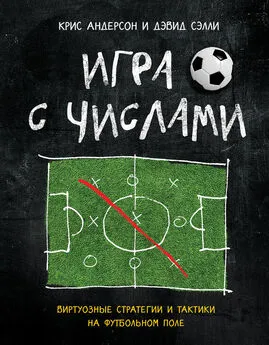

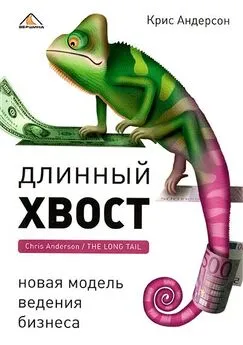
![Тони Хоукс - Теннис на футбольном поле [Играя в теннис с молдаванами]](/books/484095/toni-houks-tennis-na-futbolnom-pole-igraya-v-tenn.webp)
